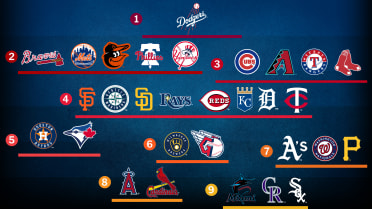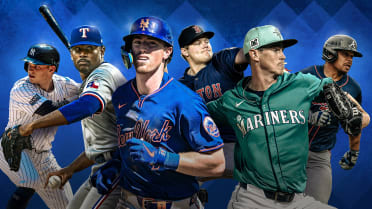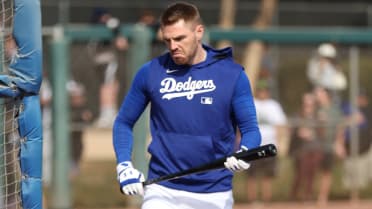This story was excerpted from Do-Hyoung Park’s Twins Beat newsletter. To read the full newsletter, click here. And subscribe to get it regularly in your inbox.
No team benefited more from the inaugural MLB Draft lottery than the Twins, who should have been slated to make their first-round selection at No. 13 but shot all the way up to No. 5 thanks to the variance instituted by the new rules.
And if there’s any Draft in which rising specifically into the top five could prove significant, it’s this one, because there’s a widespread consensus that there’s a clear top five that stands above the rest in this class -- and now, the Twins will be guaranteed to land one of those talents, if they so choose, when the first day of the Draft takes place on Sunday in Seattle.
“I mean, we’re excited just to be here, kind of,” said Twins vice president of amateur scouting Sean Johnson. “We’re going to try to do the best we can with that opportunity. And that’s how we see it. Just a chance to maybe access a better prospect in this Draft.”
So, in a sense, it could just be as simple as waiting to see which of the top-five talents remains after the first four teams have picked, and taking that final member of the group, which features LSU right-hander Paul Skenes, LSU outfielder Dylan Crews, Florida outfielder Wyatt Langford, North Carolina high school outfielder Walker Jenkins and Indiana high school outfielder Max Clark.
But is it really that easy?
“We never look at it as a certain amount of players in a Draft that we should consider,” Johnson said. “We always keep a really broad focus there. Whether it was a three-player Draft or a five-player Draft, from whatever narrative you want to get it from, we always expand our horizons. We keep as big of a pool as possible to select from.”
Johnson said the Twins have narrowed down their potential selection pool to roughly 10 players for that first-round pick, and it’s tough to imagine one of the LSU uber-talents -- Skenes or Crews -- falling to No. 5. But, as MLB Pipeline’s Jim Callis has pointed out, there’s some thought that if one of the high school outfielders falls to the Twins, their model might favor a college hitter instead, based on their past track record.
“I think that’s certainly one of our MOs, is to take college performers,” Johnson said. “They do resonate well with our model and have for a while. And our model’s changing every year, it’s adapting.”
And, of course, it’s tough to account for any uncertainty that could occur ahead of them, too. They saw that firsthand last year, when the Rangers upended most Draft projections by selecting Kumar Rocker with the No. 3 pick, which started a cascading chain of chaos that led to Brooks Lee falling all the way to the Twins at No. 8, an outcome about which they felt extraordinarily fortunate.
Whatever happens with that No. 5 pick, it will be far from the Twins’ only impact selection on Sunday, as they’ll select twice more, at Nos. 34 and 49, on Day 1. The Twins found tremendous value in that range last year, when they selected potential future frontline starter Connor Prielipp with their second-round pick, and the depth of this class makes that another favorable range this year.
The Twins will also benefit significantly from their move up the Draft board, which added nearly $2.3 million to their bonus pool, giving them the fourth-largest pool in the Draft at $14,345,600, which they can distribute as they please to their picks within the first 10 rounds. That could make a difference in potentially accessing players who slip down the Draft due to bonus demands.
“Having three picks inside the top 50, I think it’s a great year for that,” Johnson said. “I think there’s really good depth in certain parts of the Draft. So we think we’re going to get three really good players on the first night. That’s not always the case.”
The experts say …
Jim Callis, MLB Pipeline, June 29 mock draft: Clark
Jonathan Mayo, MLB Pipeline, June 22 mock draft: Jenkins
Do-Hyoung Park covers the Twins for MLB.com.




